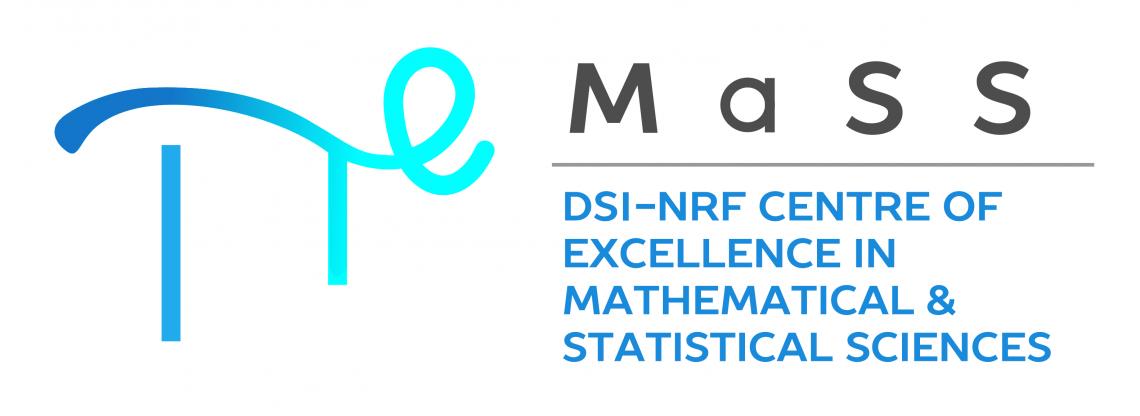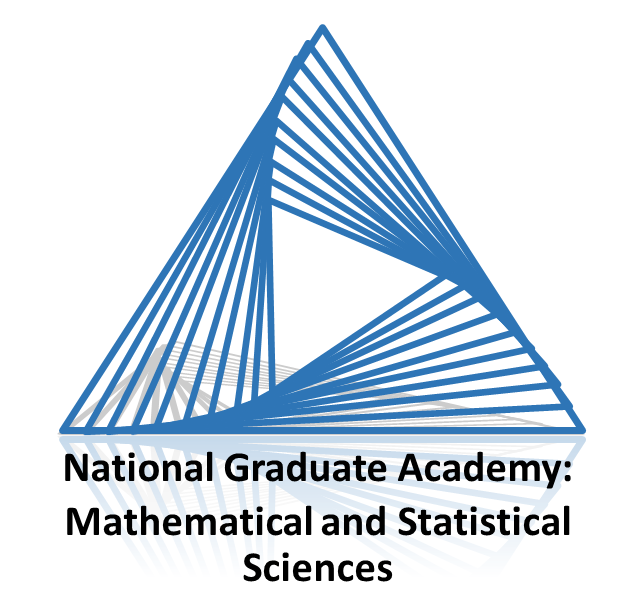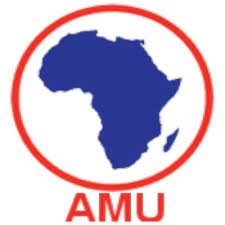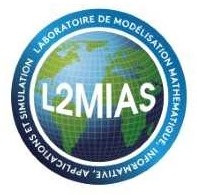3MC Presents:
International Conference on Recent Developments in Mathematical Modeling in Biology
29-31 March 2023, NWU, Potchefstroom
Partners
Sponsors

Disclaimer: Opinions expressed and conclusions arrived at are those of the author and are not necessarily to be attributed to the CoE-MaSS.


This school was supported by a grant from the IMU-CDC Conference Support Program, which is partially supported by the Abel Board.


Titles and abstracts of plenary talks
Prof Julien Arino
Title: Case introductions in the context of SARS-CoV-2 infections
Abstract: COVID-19, the disease caused by SARS-CoV-2, has spread far and wide in the slightly more than three years since its initial detection, with virtually no place on earth not having reported cases during that period. Most national-level jurisdictions have reported cases continuously since first first importing the disease. However, looking into the pattern of spread in more detail, one realises that at the local level, spread was and remains heterogeneous. The further in one "zooms", the more likely one is to observe periods during which disease spread took place, separated by periods with no apparent transmission chains. SARS-CoV-2 infections were often asymptomatic, so it is possible that some of these apparent extinction events are linked to the existence of persistent silent transmission chains. However, it is also likely that some of these observed temporary extinctions are indeed what they seem to be. The local level resurgences that follow such periods are linked to introductions, highlighting the need for a better understanding of that process. I will present work about case introductions carried out since the start of the pandemic, involving a variety of models, using both ODE and continuous time Markov chains.
Prof Jacek Banasiak
Title: Multiple time scales and long-term dynamics in epidemiological modelling
Abstract: Mathematical models in epidemiology often combine processes acting on widely different time scales. For instance, in malaria, we have interacting populations, human hosts, and mosquitoes, which evolve at different rates. In age-structured populations, the recovery rate is often much higher than the demographic rates. This offers a way to simplify the models using the tools from the singular perturbation theory.
In this talk, we present a survey of recent work in this field, including uniform in-time estimates and the emergence of the so-called canard solutions, and show how they can be applied to achieve
a meaningful reduction in the complexity of some epidemiological models.
Prof Michael Chapwanya
Title: Design of Mickens’ schemes for models in mathematical biology. Application to Ebola Virus Disease
Abstract: In this talk we discuss the relationship between continuous dynamical systems and their numerical methods for computer simulations – viewed as discrete dynamical systems. Numerical examples, with application to Ebola Virus Disease, are provided to demonstrate that numerical schemes satisfying the notion of dynamic consistency can be constructed using the nonstandard finite difference method.
Prof Sophie Dabo-Niang
Title: Investigating spatial scan statistics for multivariate functional data
Abstract: In environmental surveillance, cluster detection of environmental black spots is of major interest due to the adverse health effects of pollutants, as well as their known synergistic effect. Thus, this paper introduces new spatial scan statistics for multivariate functional data, applicable for detecting clusters of abnormal air pollutants concentrations measured spatially at a very fine scale in northern France in October 2021 taking into account their correlations.
Mathematically, our methodology is derived from a functional multivariate analysis of variance (MANOVA), an adaptation of the Hotelling T2-test statistic, and a multivariate extension of the Wilcoxon test statistic. The approaches were evaluated in a simulation study and then applied to the air pollution dataset.
Prof Winston Garira
Title: Theoretical Foundations for Single Scale Mathematical Modelling of Disease Dynamics
Abstract: Most of the progress in the development of single scale mathematical and computational models for the study of infectious disease dynamics which span over a century now is build on a body of knowledge that has been developed to address single scale descriptions of infectious disease dynamics based on understanding disease transmission process. Although this single scale modelling of infectious disease dynamics is now founded on a body of knowledge with a long history, dating back to about three centuries now, that knowledge has not yet been formalized into a scientific theory. In this talk, I will discuss the formalization of this accumulated body of knowledge into a scientific theory called the transmission mechanism theory of disease dynamics which states that at every scale of organization of an infectious disease system, disease dynamics is determined by transmission as the main dynamic disease process. I will also discuss how the transmission mechanism theory of disease dynamics has recently been extended by our research group into new radical scientific theory for multiscale modelling of infectious disease dynamics called the replication-transmission relativity theory. Throughout this talk, my aim is to show that our description of natural phenomena using scientific theories is a dynamic process because these scientific theories often only adequately describe the phenomenon studied up to a certain time. As time progresses, new knowledge often emerges as we refine the domains of observation to improve the accuracy of measurement and description.
Prof Michael Li
Title: Why do mathematical models over-project COVID-19 epidemics?
Abstract: During the COVID-19 pandemic, mathematical modeling has been widely adopted as a research tool for public health, and modelling results have played an important role informing public health responses to COVID-19. Through two years of highly intensified modeling activities, it has also become apparent that mathematical models tend to over-project the size of an epidemic wave; often over 60% of the susceptible population would be infected during a single wave. While many reasons for the over-projection were considered, from a lack of data and information to the assumptions that no public health interventions were incorporated in the projections, counter arguments abound. This has not only impacted public’s confidence in the modeling in general, but also caused much confusion and frustration among modelers, leading to claims that our standard epidemic models are great for studying underlying dynamics but simply have no predictive power.
Are there mathematical insights that can explain the observed over-projections? Indeed, I will show that the well-known final-size formula, which links the basic reproduction number R0 to the final size of an epidemic, predicts that over 60% of the population will be infected during an epidemic with R0 around 2. Then the question becomes how to improve standard epidemic models to produce accurate long-term predictions for real-world epidemics?
I will touch on several pitfalls in the modeling process that can impact the accuracy and reliability of model projections, including mismatching model outputs to data, mistaking model calibration with model validation, and unidentifiability issues in model parameter estimation. In the last part of the talk, I will demonstrate that incorporating human behavioural changes into epidemic models can improve model accuracy and reliability of model projections.
Prof Sibusiso Moyo
Title: Recent Developments in Symmetries of Differential Equations and their Role in Mathematical Modelling of Biological and Natural Phenomena
Abstract: Most natural phenomena can be modelled by nonlinear differential equations or systems of equations. Mathematical models that arise from modelling such phenomena have applications in disciplines like Biology, Physics, Cosmology, Chemistry, Engineering, Economics, Social Sciences etc. The concept of symmetry analysis is a group theoretic tool that is used to analyse models that are nonlinear or linear to better understand their properties and integrability conditions. In this plenary session, some applications and the role symmetry methods play coupled with other well-known methods is demonstrated. With the advent of the pandemic and the rise in public health issues nationally and globally due to the pandemic, examples in pandemic modelling and relations of how this work relates in addressing the sustainable development goals is presented. Additionally, as part of research and innovation management, the work being done at Stellenbosch University together with the Centers of Excellence and Research Focus Areas is also highlighted with a view of potential areas for future directions and inter-disciplinary, inter-institutional collaborations.
Prof Rachid Ouifki
Title: Oncolytic Virotherapy: Virus delivery and virus-immune interactions, a mathematical modelling approach
Abstract: Oncolytic viruses (i.e. viruses that selectively replicate and destroy cancer cells while keeping normal cells unharmed) have emerged as promising novel therapeutic strategy against most advanced types of cancers. However, their delivery to tumor sites, and the antiviral immune response remain two major obstacles for the success of such therapy. In this talk, we will explore possible ways to overcome these obstacles. We start by investigating the interplay between oncolytic potency and reduced virus tumor specificity. Then we explore the mechanisms of using mesenchymal stem cells (MSCs) loaded with oncolytic viruses for delivering virotherapeutic agents to the tumor site. Additionally, we assess the potential success of combining virotherapy with another promising therapy that uses the chimeric antigen receptor T (CAR-T) cells. Finally, we explore the impacts of delays in virus delivery on the outcomes of virotherapy.
Prof Kailash Patidar
Title: Slow-fast dynamical systems in mathematical biology
Abstract: In this talk, we will discuss a few prototype models describing slow-fast dynamical systems arising in mathematical biology. Many of these models are singularly perturbed in nature and hence special treatment is required to understand the dynamics that they govern. We will discuss the challenges encountered with their qualitative analyses followed by a quick overview of robust numerical methods that one may use to obtain reliable solutions of such models.
Prof Stephanie Portet
Title: Modelling cytoskeleton: case study of intermediate filaments
Abstract: Intermediate filaments (IFs) are one of the components of the cytoskeleton, which is a network of structural proteins in cells. IFs are involved in cell mechanics, signaling and migration. The organization of intermediate filaments in networks is the major determinant of their functions in cells. Their spatial and temporal organization results from the interplay between assembly/disassembly processes and different types of transport. An overview of mathematical models used to investigate important mechanisms such as the filament elongation or intracellular transport of filaments will be presented.
Prof. Jomar F. Rabajante
Title: Soft skills for mathematical modelers of biological systems
Abstract: A mathematical modeler is expected to possess good quantitative and critical thinking skills. In addition to these skills, soft skills are also crucial to succeed in the mathematical modeling practice. In this talk, I will present the significance of developing creativity (especially in designing the mathematical model and in presenting outputs), proficiency in communicating with various audiences (including news agencies), diplomacy and negotiation abilities (especially when dealing with the government and other organizations), teamwork (including working with people from other disciplines), and capability to do foresight (especially as input to anticipatory planning). In each soft skill, I will provide simple stories based on our experience in the Philippines, including our experience in fighting COVID-19. To end the talk, I will discuss ethical standards in mathematical modeling.
Prof James Watmough
Title: Stage-structured dispersal in marine species with a pelagic larval stage
Abstract: Aquatic species often have radically different dispersal mechanisms at different life history stages. For example, a rapidly dispersing pelagic larval stage dispersing in a current and a sessile or slow dispersing adult stage. We use a structured integro-difference equation model of the the spread of the green crab up the northwest coast of the Atlantic as a case study to examine the dependence of invasion dynamics on both adult and larval dispersal. Adding an additional dispersive stage increases invasion spread rates. However, it is unclear how the sensitivity of spread rate to underlying parameters might change with additional dispersive stages. Knowledge on the sensitivity of spread rate to demographic and dispersal parameters helps inform management strategies.


